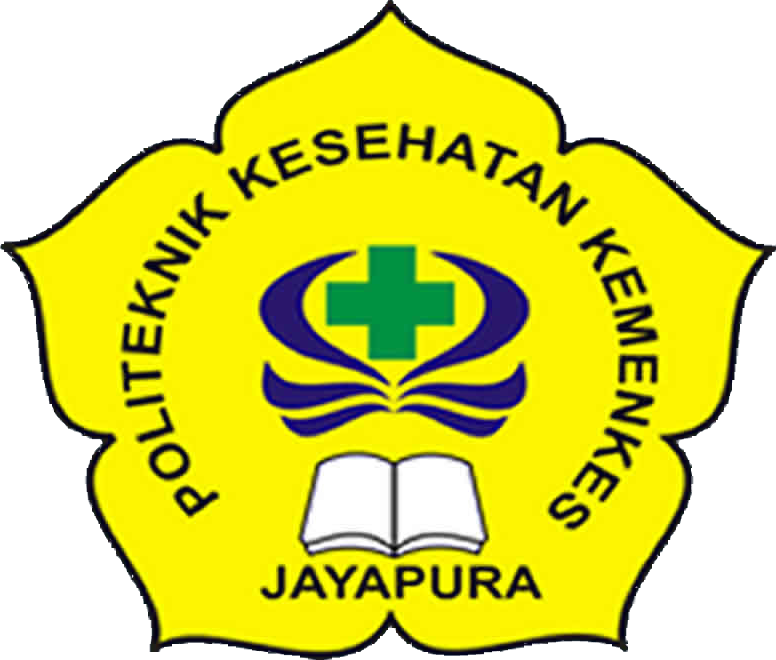LETHAL TIME BIOLARVA PADA LARVA AEDES AEGYPTI
Keywords:
Aedes aegypti, Larvacide, Lethal timeAbstract
Aedes aegypti is a Dengue Hemorrhagic Fever (DHF) vector caused by mosquitoes bites from DHF patients to healthy humans. Aedes aegypti needs an optimized temperature to continue their generation. At the larval stage, the temperature required by the larva is 37 ° C with a pH of 7. At optimal temperature, the larvae can become adult mosquitoes that harm humans. Larval control through chemical insecticides can pollute the environment so that natural insecticides are needed. This study aims to identify LT50 biolarvacide 2% concentration. This study is carried out through a systematic review. Of the 125 articles, nine were selected, which were used as the main library. The nine articles use biological larvicides to control Aedes larvae aegypti with lethal time (LT50) varies from 1 hour to 24 hours. Legundi leaves in a concentration of 2% have the fastest LT50, which is 1 hour, while zodia has the longest lethal time of 24 hours with the same attention.
Downloads
References
Anggraini, T. S., & Cahyati, W. H. (2017). Perkembangan Aedes aegypti pada Berbagai PH Air dan Salinitas Air. Higeia Journal of Public Health Research and Development, 1(3), 1–10.
Arif, A. (2015). Pengaruh Bahan Kimia terhadap Penggunaan Pestisida Lingkungan. JF FIK UINAM, 3(4), 134–143.
Astriani, Y., & Widawati, M. (2017). Potensi Tanaman Di Indonesia Sebagai Larvasida Alami Untuk Aedes aegypti. Spirakel, 8(2), 37–46. https://doi.org/10.22435/spirakel.v8i2.6166.37-46.
Astuti, E. P., Riyadhi, A., Ahmadi, N. R., Litbangkes, L., Penyakit, P., Binatang, B., Pengkajian, B., Pertanian, T., & Timur, K. (2017). Efektivitas Minyak Jarak Pagar Sebagai Larvasida, Anti-Oviposisi Dan Ovisida Terhadap Larva Nyamuk. Buletin Penelitian Tanaman Rempah Dan Obat, 22(1), 44–53. https://doi.org/10.21082/bullittro.v22n1.2011.
B Cania, E., & Setyaningrum, E. (2013). Uji Efektivitas Larvasida Ekstrak Daun Legundi (Vitex trifolia) terhadap Larva Aedes aegypti. Medical Journal OfLampung University, 2(4), 52–60.
Baskaranatha I Made; Swastika, I Kadek, P. B. O. S. (2020). Efektivitas Ekstrak Etanol Daun Legundi (Vitex Trifolia L.) Sebagai Larvisida Pada Larva Aedes Aegypti. E-Jurnal Medika Udayana, 9(Vol 9 No 6 (2020): Vol 9 No 06(2020): E-Jurnal Medika Udayana), 84–88. https://ojs.unud.ac.id/index.php/eum/article/view/60793.
Djakaria, Sungkar, S., & Hoedojo. (2008). Morfologi, Daur Hidup dan Perilaku Nyamuk. Dalam: Sutanto, I., Ismid, I.S., Sjarifuddin, P.K., Sungkar, S. Buku Ajar Parasitologi Kedokteran Edisi keempat (Keempat). Fakultas Kedokteran Universitas Indonesia.
Dos Santos Dias, L., MacOris, M. D. L. D. G., Andrighetti, M. T. M. O., Otrera, V. C. G., Dias, A. D. S., Bauzer, L. G. S. D. R., Rodovalho, C. D. M., Martins, A. J., & Lima, J. B. P. (2017). Toxicity of Spinosad to Temephos-Resistant Aedes aegypti Populations in Brazil. PLoS ONE, 12(3), 1–15. https://doi.org/10.1371/journal.pone.0173689.
Embong, N., & sudarmaja, I. (2017). Pengaruh Suhu Terhadap Angka Penetasan Telur Aedes Aegypti. E-Jurnal Medika Udayana, 5(12), 1–8.
Grisales, N., Poupardin, R., Gomez, S., Fonseca-Gonzalez, I., Ranson, H., & Lenhart, A. (2013). Temephos Resistance in Aedes aegypti in Colombia Compromises Dengue Vector Control. PLoS Neglected Tropical Diseases, 7(9). https://doi.org/10.1371/journal.pntd.0002438.
Kresnadi, I., Amin, B. F., Ariq, H., Akbar, V. A., Winita, R., Syam, R., Susanto, L., Firmansyah, N. E., & Wibowo, H. (2021). The Susceptibility of Aedes aegypti In Dengue Endemic Areas, Tegal, Central Java Indonesia. Balaba: Jurnal Litbang Pengendalian Penyakit Bersumber Binatang Banjarnegara, 11–18. https://doi.org/10.22435/blb.v17i1.3325.
Kurniawati, R. D., & Ekawati, E. (2020). Analisis 3M Plus Sebagai Upaya Pencegahan Penularan Demam Berdarah Dengue Di Wilayah Puskesmas Margaasih Kabupaten Bandung. Vektora : Jurnal Vektor Dan Reservoir Penyakit, 12(1), 1–10. https://doi.org/10.22435/vk.v12i1.1813.
Mantik, N. (2016). Pengaturan Pengendalian Dampak Limbah Bahan Berbahaya dan Beracun (LB3) terhadap Pencemaran Lingkungan Hidup. Lex Administtratum, IV(1), 85–93.
Mulyatno, K. C., Yamanaka, A., Ngadino, & Konishi, E. (2012). Resistance of Aedes aegypti (L.) Larvae to Temephod in Surabaya, Indonesia. Southeast Asian J Trop Med Public Health, 43(1), 29–33.
Noshirma, M., & Willa, R. W. (2016). Larvasida Hayati yang digunakan dalam upaya Pengendalian Vektor Penyakit Demam Berdarah di Indonesia. Jurnal Penelitian Kesehatan, 3(1), 31–40. http://ejournal.litbang.depkes.go.id/index.php/sel/article/view/6380
Ridha, m rasyid, Rahayu, N., Rosvita, nur afrida, & Setyaningtyas, dian eka. (2013). Hubungan Kondisi Lingkungan dan Kontainer dengan Keberadaan Jentik Nyamuk Aedes aegypti di daerah Endemis Demam Berdarah Dengue di kota Banjarbaru. Epidemiologi Dan Penyakit Bersumber Binatang, 4(3), 133–137.
Sahrir, N., Ishak, H., & Maidin, A. (2016). Pemetaan Karakteristik Lingkungan dan Densitas Nyamuk Aedes aegypti berdasarkan Status Endemisitas DBD di Kecamatan Kolaka. JST Kesehatan, 6(1), 70–75.
Susanti, L., & Boesri, H. (2012). Toksisitas Biolarvasida Ekstrak Tembakau dibandingkan dengan Ekstrak Zodia terhadap Jentik Vektor Demam Berdarah Dengue (Aedes aegypti). Buletin Penelitian Kesehatan, 40(2), 75–84.
Syamsuhidayat, S. S., & Hutapea, J. R. (1991). Inventaris tanaman obat Indonesia. Departemen Kesehatan RI, Badan Penelitian dan Pengembangan Kesehatan.
Valle, D., Bellinato, D. F., Viana-Medeiros, P. F., Lima, J. B. P., & Martins Junior, A. D. J. (2019). Resistance to Temephos and Deltamethrin in Aedes aegypti from Brazil between 1985 and 2017. Memorias Do Instituto Oswaldo Cruz, 114(3). https://doi.org/10.1590/0074-02760180544.
WHO. (2011). Comprehensive Guidelines for Prevention and Control of Dengue and Dengue Haemorrhagic Fever. In World Health Organisation. World Health Organization. https://apps.who.int/iris/bitstream/handle/10665/205653/B0109.pdf.
Williams, C. R., Mincham, G., Ritchie, S. A., Viennet, E., & Harley, D. (2014). Bionomic Response of Aedes aegypti to Two Future Climate Change Scenarios in Far North Queensland, Australia: Implications for Dengue Outbreaks. Parasites and Vectors, 7(1), 1–7. https://doi.org/10.1186/1756-3305-7-447.
Yuliani, S., & Satuhu, S. (2012). Panduan Lengkap Minyak Atsiri. Penebar Swadaya.
Published
How to Cite
Issue
Section
Copyright Notice Authors who publish with Gema Kesehatan (GK) agree to the following terms: Authors retain copyright and grant Gema Kesehatan (GK) right of first publication with the work simultaneously licensed under a Creative Commons Attribution License CC-BY-SA



















